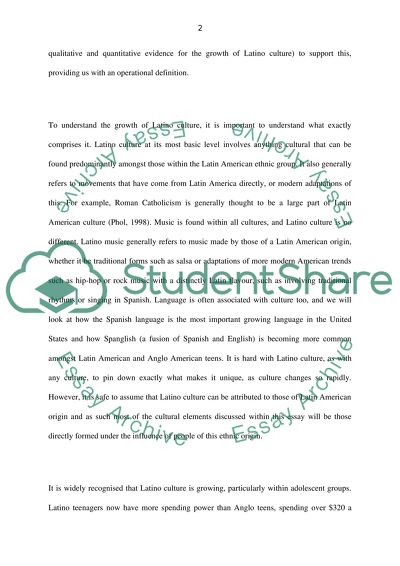Cite this document
(“Latino Culture is Growing Research Paper Example | Topics and Well Written Essays - 1750 words”, n.d.)
Retrieved from https://studentshare.org/family-consumer-science/1416802-latino-culture-is-growing
Retrieved from https://studentshare.org/family-consumer-science/1416802-latino-culture-is-growing
(Latino Culture Is Growing Research Paper Example | Topics and Well Written Essays - 1750 Words)
https://studentshare.org/family-consumer-science/1416802-latino-culture-is-growing.
https://studentshare.org/family-consumer-science/1416802-latino-culture-is-growing.
“Latino Culture Is Growing Research Paper Example | Topics and Well Written Essays - 1750 Words”, n.d. https://studentshare.org/family-consumer-science/1416802-latino-culture-is-growing.


